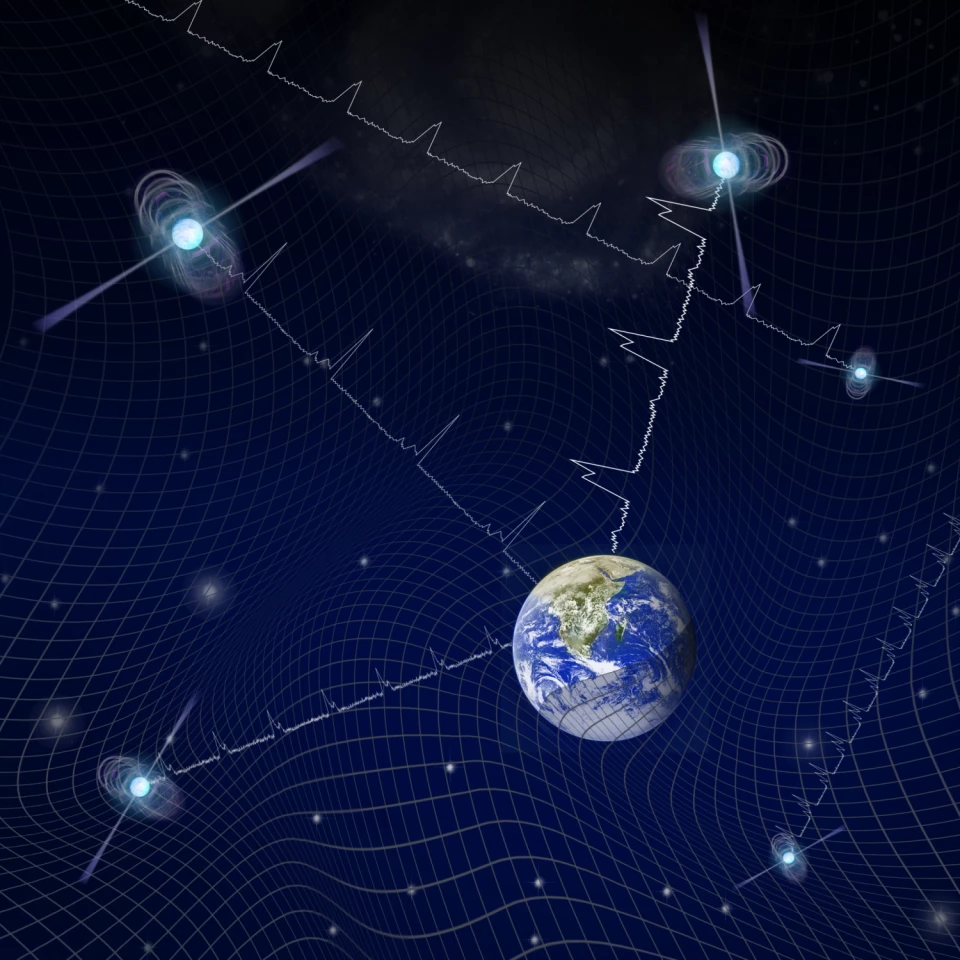Just a few months ago, scientists reported the detection of very low-frequency gravitational waves. Now a pair of German astrophysicists has investigated two intriguing possible sources – the universe cooling down after the Big Bang, and a field of particles that could be dark matter.
First detected in 2015, a century after Einstein predicted their existence, gravitational waves are ripples that course through the fabric of spacetime itself. They’re usually given off by cosmic cataclysms like collisions between black holes and/or neutron stars.
These events create signals that are short and sharp, washing over the Earth in seconds or even faster. But it was also predicted that there should be a steady background field of gentle waves with huge wavelengths that could take more than a year to pass us by. These are much harder to pick up, requiring much larger detectors than can be built here on Earth.
But in January the NANOGrav collaboration reported the first detection of these waves, with a very low frequency of about 10-8 Hz. These were picked up by observing a series of bright pulsars across the galaxy for over a decade, watching how their light is stretched or squeezed at different intervals as it follows the ebb and flow of background gravitational waves.

In this new study, scientists at Johannes Gutenberg University Mainz (JGU) investigated what may have produced those ripples. They found that the signal is consistent with two scenarios that lie outside the Standard Model of physics: a phase transition in the early universe, and a field of axion-like particles (ALPs) that may constitute dark matter.
"Even though so far the data only provides us with a first hint of the existence of low-frequency gravitational waves, it is still very exciting for us to work with them,” says Wolfram Ratzinger, co-author of the study. “This is because such waves could be produced by various processes that occurred in the early universe. We can now use the data we already have to decide, which of these come into consideration and which do not fit the data at all.”
The first scenario takes us back almost to the dawn of the universe. After the Big Bang, the universe was filled with quark-gluon plasma – a dense “primordial soup” of elementary particles – that slowly cooled into the kinds of matter we see today. This phase transition is thought to have given off massive turbulences, which could be detectable as low-frequency gravitational waves.
Interestingly, these signals could give scientists a glimpse behind the previously inaccessible curtain of the early universe. The cosmic microwave background (CMB) is a field of radiation that pervades the universe, often described as the afterglow of the Big Bang. However, this field obscures the earliest days of the universe from view by telescopes, meaning the furthest back we can see is about 300,000 years after the Big Bang. These gravitational waves could carry information from before then.
The second scenario is that the low-frequency gravitational waves were produced by a “dark matter field.” Axions are hypothetical elementary particles that, if they exist, are believed to float around the universe in waves, rarely interacting with normal matter. As such, they’ve been proposed as a dark matter candidate.
The team on the new study suggests that a field of axion-like particles could be responsible for the gravitational wave signals. These ALPs would transfer energy to another hypothetical particle called a dark photon, which would be a force carrier similar to the familiar electromagnetic photon. This energy transfer would amplify quantum fluctuations in the dark photon field, the team says, which could grow into the kind of gravitational wave background that was detected.
The researchers say that of the two scenarios, phase transition is the more likely candidate. They also point out, however, that the original team's conclusion – that the ripples represent background noise of collisions between supermassive black holes – is still the neatest explanation. But either way, further investigation could potentially help unlock secrets from beyond the Standard Model.
"Our work is a first, but important development – it gives us a lot of confidence that with more precise data we can draw reliable conclusions about the message gravitational waves are sending us from the early universe,” say the researchers.
The study was published in the journal SciPost Physics.





